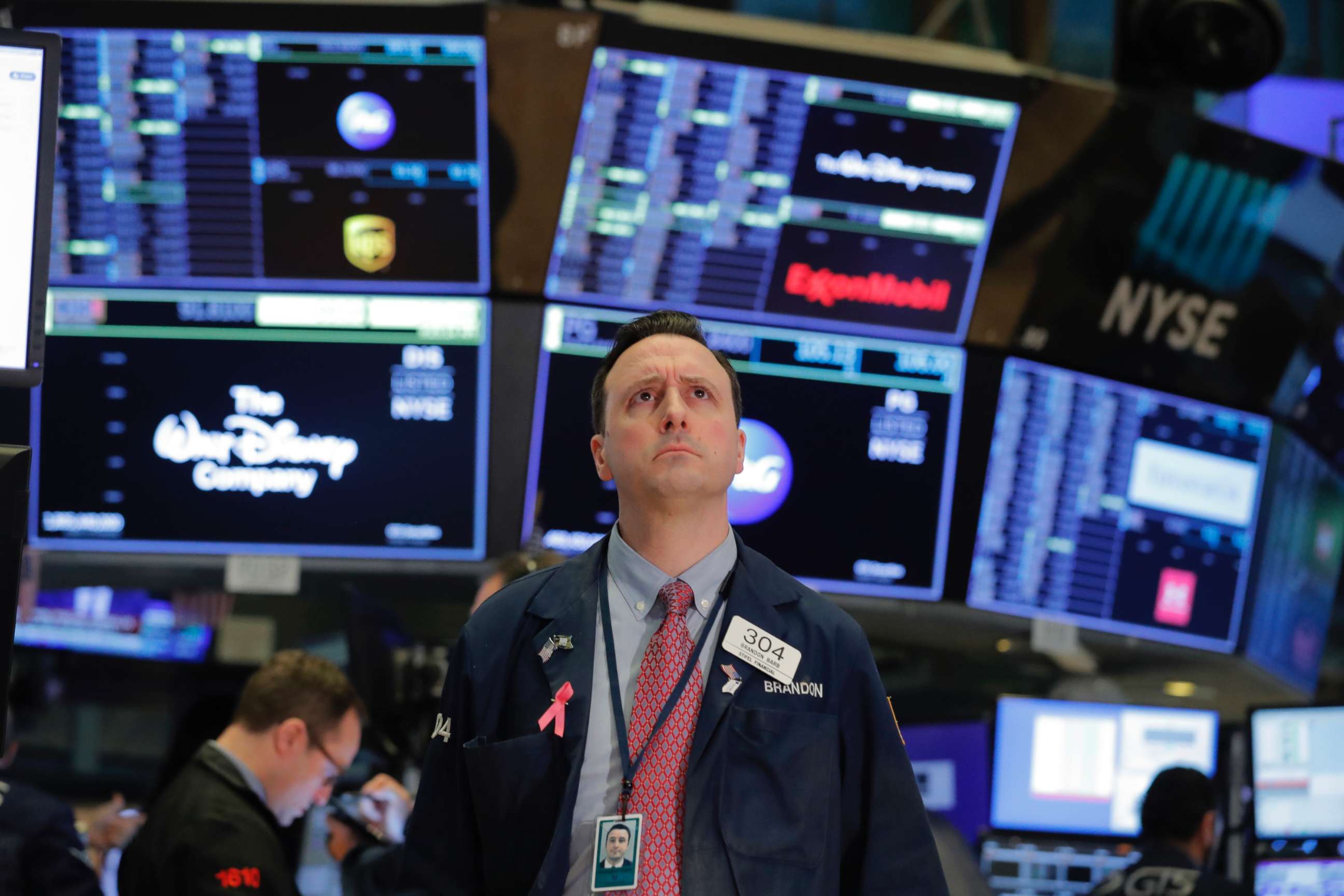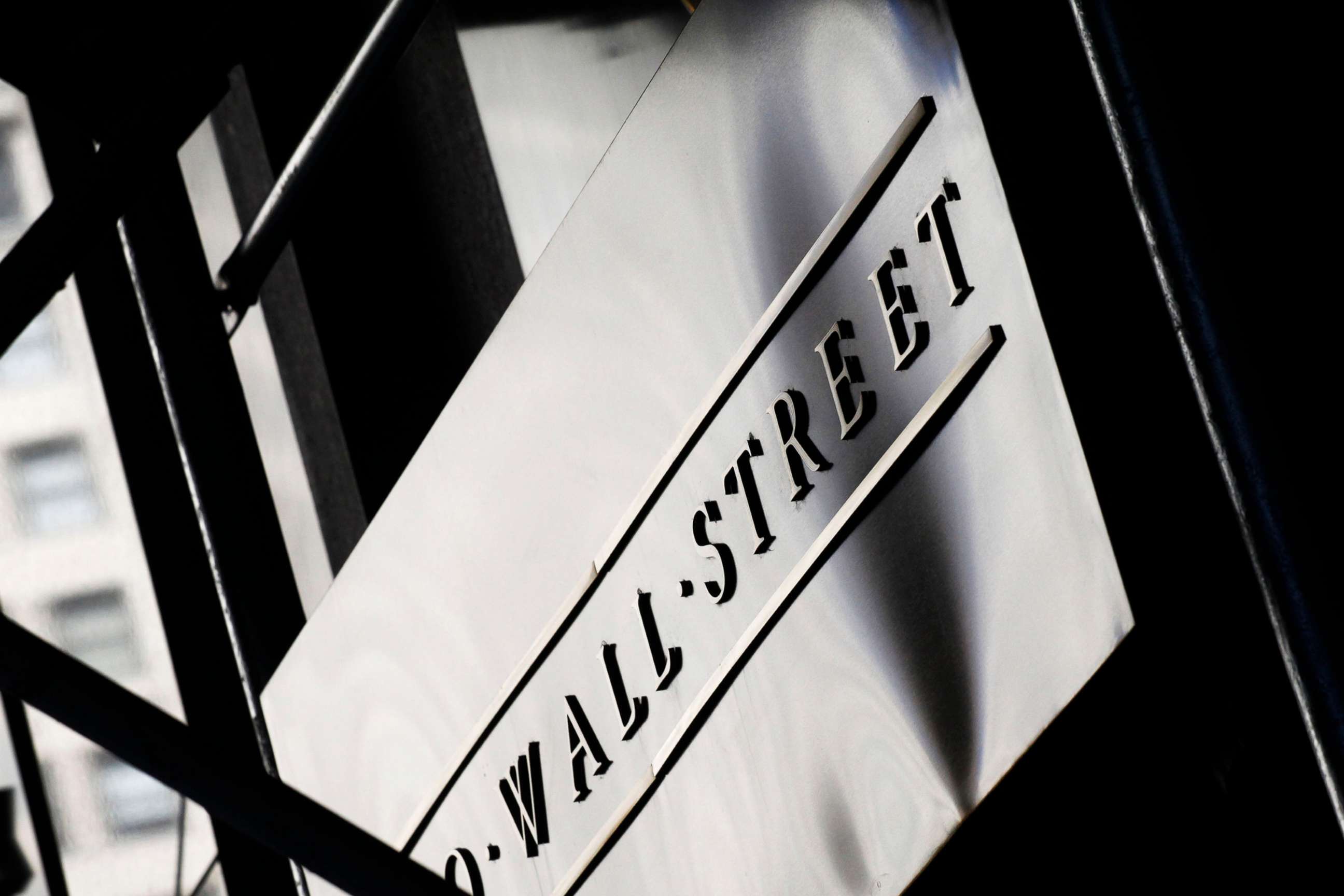Stock market surges day after worst lost since 1987
The Dow Jones Industrial Average has plunged amid the coronavirus outbreak.
U.S. financial markets bounced back on Friday after the Dow Jones Industrial Index suffered its worst loss since 1987, surging 1,985 points, more than 9%, as the S&P 500 and Nasdaq each made similar gains.
Markets surged at the opening bell, but after gains retreated slightly around midday -- the Dow, S&P 500 and Nasdaq were up between 2.2% and 2.5% -- they rebounded before the closing bell.

The markets have plummeted amid the novel coronavirus outbreak and the World Health Organization declaring it a "pandemic."
Friday's gains came a day after the Dow lost more than 2,350 points, almost 10%, a day after falling 1,464 points, or 5.86%, as investor anxiety pushed the index into a bear market for the first time since the 2008 financial crisis.
As President Donald Trump addressed the nation on Friday afternoon, declaring a national emergency over the coronavirus, he mentioned a handful of companies -- Google, CVS, Target and Walmart -- that saw their stocks soar to session highs.
Greg McBride, chief financial analyst at Bankrate, told ABC News that the public should be prepared to see volatility in markets as the situation unravels.
"What's driving the sharp decline we've seen the market over the last three weeks is a health risk with a lot of unknowns," McBride added. "Until we've got answers and we can model out what that means for the economy and corporate earnings, stocks are gonna be volatile."
He said the U.S. economy is essentially "on pause," but "when we hit resume [and] play things will start to get back to normal quickly."
As markets reeled this week, the Federal Reserve announced a $1.5 trillion plan to help stabilize the financial system, but that appeared to have little effect on Thursday.

"These changes are being made to address highly unusual disruptions in Treasury financing markets associated with the coronavirus outbreak," the Federal Reserve Bank of New York said in a statement Thursday.




